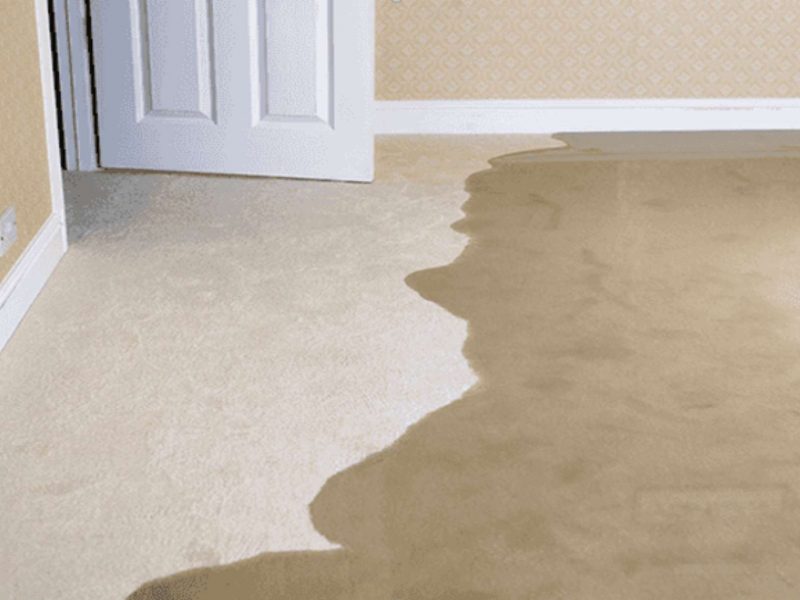Foundation and slab leaks are some of the most common causes of water damage. Foundation leaks can be caused by cracked or broken pipes, missing or loose parts on the water meter, or defective plumbing fixtures. Slab leaks are caused by a crack in the slab of the building, usually around plumbing pipes.
How are Foundation and Slab Leaks Fixed?
Trenchless technology has been used to repair both foundation and slab Leaks. Foundation leaks are repaired using trenchless pipe bursting, which is a method used to quickly and accurately repair broken underground pipelines. The process involves an operator who employs special equipment and techniques to clean out and repair a damaged pipeline while working from the inside of the line.
Slab leak repair uses pipe bursting, micro-trenching, pipe jack, and pipe ramming to correct the problem. They work by pushing a new liner through your existing line. This process is repeated until the liner is completely in place. The liner creates a water-tight seal for your existing pipe. Slab leaks repairs using trenchless methods are less invasive than traditional methods of repairing slab leaks.
When Do Foundation Leaks Occur?
Foundation leaks occur when water that is supposed to drain away from a building’s foundation instead makes its way into the basement or crawl space. Slab leaks occur when water seeps through the cracks in a concrete slab basement or garage floor. Trench drains are designed to help correct both types of problems.
They are installed in trenches outside your home’s foundation or slab. As their name suggests, they run at ground level, usually along the perimeter of your home. The function of trench drains is simple- to move water away from a building’s foundation and/or slab as quickly and effectively as possible. While they do not eliminate the problem entirely, they do prevent structural damage and mold growth that can result from water damage.
It is important to know the signs of foundation and slab leaks so that you can act quickly to stop them before they cause more damage.
Here are signs that may signal a foundation or slab leak:
- Wet or damp spots on the floor – If you notice any damp spots on the floor, it could be a sign of a foundation or slab leak. This is especially true if the spot is in an isolated area, such as near a wall or in a corner.
- Water stains on the ceiling – Water stains on the ceiling are another common sign of a foundation or slab leak. The water may be coming from the roof, but it could also signify that water is leaking through the floor.
- Mold or mildew – Mold and mildew can be a sign of water damage, and it may be a sign that you have a foundation or slab leak.
- A sudden increase in your water bill – If your water bill has increased suddenly, it could be a sign of a leak. Foundation and slab leaks can waste a lot of water, so this is often one of the first signs people notice.
- Sloppy or wet soil around your home – Sloppy or wet soil around your home could be a sign of a foundation leak. This is especially true if the water seems to be coming from the walls or basement of your home.
- Water running down the inside of exterior walls – Water running down the inside of exterior walls may be a sign that you have a slab leak. You may also see water seeping through cracks in the concrete, which is another sign of a slab leak.
- Cracks in the foundation – Slab leaks can cause cracks in your concrete foundations. These are usually small, hairline fractures that run through the surface of a wall or underneath your flooring.
- Slabs or concrete that are uneven – Slab leaks can cause slabs and concrete to become uneven. This is because the water often seeps into the foundation, causing it to crumble away over time.
If you notice any signs of a slab leak, it is important to get them repaired as soon as possible before they do more damage and create bigger problems for your home. Slab leaks are often caused by faulty plumbing systems or damaged gutters and downspouts, so make sure these areas are checked first if you suspect a slab leak has occurred at your home. If water seems to be coming from under the walls, there may be serious moisture issues with an exterior foundation drain tile system, causing basement flooding.
The best way to determine what type of problem is occurring and how to fix it is by having a professional home inspection done. Slab leaks are often overlooked because they do not cause major damage immediately, but if left untreated, can lead to serious problems later down the line, such as structural integrity issues with your foundation or even mold growth, which will cost you more money, in the long run, to remove.













Comments